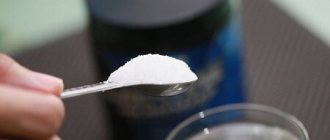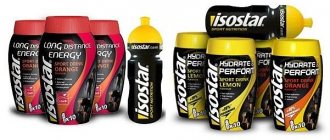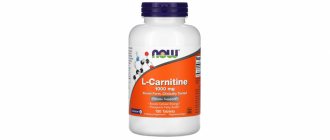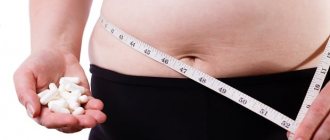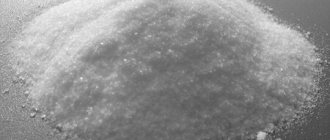L-carnitine is a vitamin-like substance that is found in the muscle tissue of all mammals, as it plays an important role in metabolism. Human muscle tissue and liver contain about 20-30 g of carnitine, depending on training and genetic characteristics. The need for it ranges from 0.2 to 0.5 g, and can reach up to 2 g per day during ultra-intense training.
L-carnitine is found in many foods that we eat every day, mainly all types of meat, as well as fish, cottage cheese, wheat and others. Despite this, there is often a shortage of carnitine from traditional sources and additional consumption is required, especially for athletes and people leading an active lifestyle and wanting to lose excess weight.
The daily dosage depends on many indicators, in particular on age, anthropometric indicators, health status and level of physical activity. Approximate dosages:
- For children under one year of age – up to 30 mg.
- Children from 1 to 3 years inclusive – 35-60 mg.
- Children from 4 to 6 years old inclusive – 60-100 mg.
- Children from 6 to 18 years old - from 100 to 500 mg.
- For adults who do not engage in sports, 250 to 500 mg is recommended.
- For athletes and people leading an active lifestyle and those who want to reduce excess weight, the recommended daily dose is from 500 to 1500 mg.
Despite the drug not being 100% harmless, you should not exceed the dose of 2 g/day, since this makes no sense, there is no direct relationship between the amount of carnitine consumed and the intensity of weight loss.
The duration of treatment can be from 2 to 6 months.
What is L-carnitine?
Firstly, it should be noted that L-carnitine is not that coveted “magic” pill that will help you lose weight without making any effort. Secondly, the probability that such a “magic” pill exists in principle tends to zero at the speed of light.
So, carnitine is found in muscle tissue and the name comes from the Latin “carnis” - meat. L-carnitine (levocarnitine) is a natural substance related to B vitamins, therefore it is often called a vitamin-like substance, and is also mistakenly called vitamin B11.
This substance is involved in metabolic processes that occur both in muscle tissue and in the liver. The main process in which levocarnitine is involved is the process of producing energy from fats. To be more precise, carnitine transports fatty acids into mitochondria, where oxidation (combustion, perhaps more eloquently) of fatty acids and energy production occurs.
To understand, let’s take a closer look at the process of using lipids as an energy source. Fat accumulated as a result of a couch-office lifestyle can be used by the body in 3 stages:
- Destruction of fat molecules (triglycerides) into glycerol and fatty acids under the influence of a complex of hormones and enzymes, as well as physical activity.
- Transport of fatty acids to mitochondria, where the oxidation process occurs
- Fat oxidation in mitochondria is one of the main processes of providing energy to the body.
Thus, L-carnitine promotes only one stage in the fat burning process. Excessive consumption of L-carnitine will not increase the transport of fatty acids if not enough of them were formed at the first stage. Levocarnitine only increases the effectiveness of aerobic (this is important) training, allowing you to burn a little more fat than without it. Something like this... And yes, training to burn fat should be aerobic, i.e. with sufficient oxygen supply to the tissues, since under anaerobic conditions fat cannot be used as an energy source, unlike carbohydrates.
Indications for use
- For weight loss
The main indication for the use of L-carnitine is weight loss. Since L-carnitine plays an important role in the process of burning fat and, therefore, is one of the main agents used in schemes and diets related to weight loss.
- For mental activity
Based on the results of several studies, it can be concluded that the use of L-carnitine helps improve cognitive functions of the brain. And levocarnitine is recommended as a prevention of unwanted changes in the brain with age, as well as as a means of improving memory, concentration and attention.
- To increase endurance
Since L-carnitine promotes the production of additional energy from fat, it is indicated for use in athletes to develop endurance.
Sometimes the drug is recommended for vegetarians who are deficient in this substance due to the exclusion or insufficient consumption of animal products.
Reviews
To summarize, I am pleased to report that Power System's L-carnitine supplements have received positive reviews in most cases. Users note that these fat burners have a mild effect, do not overload the heart and nervous system, and most take them not only to speed up the lipolysis process, but also as a pre-workout complex.
There are negative opinions that the product is useless, but for the most part such reviews do not indicate information about whether the diet was followed. You need to understand that not a single fat burner will help if there is no reduction in calories in the diet.
Natural sources of carnitine?
L-carnitine is found mainly in animal products, particularly meat and processed meats. In order to meet increased carnitine requirements, traditional sources are often not enough, since in addition to L-carnitine they contain fat and other nutrients that may not fit into the nutrition plan as part of a diet or sports training. In this regard, using L-carnitine supplements may be the best way to go.
However, you should not neglect natural sources of carnitine; the table shows products containing high concentrations of levocarnitine.
Meat and poultry
| Product, 100 g | Product type | L content , mg |
| Mutton | Raw/cooked | 150-160 (50-55) |
| Beef | Raw/cooked | 120-130 (45-50) |
| Veal | Stewed | 40-45 |
| Pork | Stewed | 20-25 |
| Rabbit meat | Stew | 20-25 |
| Turkey | Boiled | 13-15 |
| Chicken | Boiled | 8-10 |
| Duck liver | Stewed | 4-5 |
Fish and seafood
| Product, 100 g | Product type (processing) | L content , mg |
| Crustaceans | Boiled | 10-15 |
| Herring | Raw/salted | 10-12 (3,5-4) |
| Acne | Smoked | 6,7-7 |
| Flounder | Raw | 6,3-6,5 |
| Shrimp, langoustines | Raw | 6-6,5 |
| Sea bass | Fried | 5-5,5 |
| Tuna | Canned | 3-3,5 |
| Mussels | Boiled | 2,5-3 |
| Squid | Boiled | 2-2,5 |
In sea fish, the L-carnitine content rarely exceeds 5 mg, in river fish – up to 4 mg.
Dairy
| Product, 100 g | L content , mg |
| Goat cheese | 12-13 |
| Condensed milk | 9-10 |
| Yogurt | 3,5-4 |
| Unpasteurized milk | 3,5-3,9 |
| Ice cream | 3,5-3,7 |
| Heavy cream | 3-3,5 |
| Cottage cheese | 2,4-2,9 |
| Sour cream | 2,1-2,4 |
| Hard cheeses | 1,5-2 |
For comparison, in the table below you can see the carnitine content in foods of plant origin.
| Product, 100 g | L content , mg |
| Mushrooms | 1,3-3,9 |
| Fruits | 0,002-0,006 |
| Fruit juices | 0,0019 |
| Vegetables | 0,19-1 |
| Nuts | 0,05-0,08 |
| Peanut butter | 0,083 |
It should be borne in mind that during heat treatment of products, 25-30% of L-carnitine is destroyed and this must be taken into account.
Side effects and contraindications
Repeated overdose can cause digestive upset, which goes away quickly, because excess L-carnitine is destroyed by intestinal bacteria and excreted by the kidneys. The following side effects are rare:
- Quincke's edema;
- seizures in patients with epilepsy;
- muscle weakness due to kidney disease.
The drug combines well with classic fat burners - it mitigates their side effects. SportTech suggests evaluating the effect of the following concentrates: L-carnitine + Guarana; L-carnitine + Green tea.
Correct use of L-carnitine is the key to gradual, healthy weight loss.
Types of L-carnitine
- L-carnitine is 3-hydroxy-4-N-trimethyl-aminobutyric acid, this is the formula that is synthesized in the body from the amino acids lysine and methionine.
- Acetyl-L-Carnitine (ALCAR) is an ester form of L-carnitine with the addition of an acetyl group, which allows the substance to cross the blood-brain barrier. Only this form of carnitine helps improve brain activity. This form is also absorbed faster than the standard form of L-carnitine, but is also excreted much faster.
- L-carnitine L-tartrate is a non-ester (chelate) form of L-carnitine and tartaric acid, which is quickly absorbed in the body and, unlike other forms, remains in high concentration in the blood for a long time. This form is most often used by sports nutrition manufacturers.
- Glycine propionyl-L-carnitine (GPLC) is the ester form of L-carnitine bound to the amino acid glycine. This form has an antioxidant effect in the body and can increase blood flow during exercise, however, it is quickly eliminated from the body.
- L-carnitine fumarate - contains a fumaric group, has good digestibility, as well as antioxidant properties. Rarely used as a source of L-carnitine.
- Which is better?
In order to reduce body weight, it is recommended to choose non-ether forms (pure carnitine or carnitine tartrate), they are absorbed much better than other forms, and the carnitine content in the blood after taking these supplements is much higher and the effect lasts longer. At the same time, to improve brain activity, it is possible to use only the acetyl form.
Release forms
- Powder
Without additives, L-carnitine has a rather unpleasant taste, so powder products usually use various combinations of components, with energy drinks, vitamins, minerals and biologically active substances. Manufacturers are also forced to add such combinations of flavoring additives that will neutralize the unpleasant taste of carnitine and other substances. If you use natural flavors, the price of the product will be astronomical, and artificial flavors have conflicting reviews both in the scientific community and among consumers.
- Pills
L-carnitine in tablet form is most often found in pharmacies. The main disadvantage is the small dosages of the active substance in one tablet. As a result, this form is unprofitable and inconvenient.
- Capsules
The capsule form of L-carnitine is also pure, without additives, impurities, or sweeteners. The capsule usually contains 500 mg of L-carnitine, 4 of which are required per day. Before training, the daily dose is taken once within 30-40 minutes. On rest days, the supplement is taken 2 capsules 2 times a day after meals (the first dose in the morning, the second at lunch or at night). Capsules are washed down with a glass of water.
- Liquid form (ampoules)
This form with a high concentration of the active substance is quite convenient to use. However, when producing a liquid form, manufacturers are forced to add additional ingredients to stabilize taste and shelf life, including fast carbohydrates and preservatives.
- Which is better?
When choosing a form, you need to take into account the concentration of the active substance and price. If we proceed from digestibility, depending on the form of release of the drug and the maximum benefit, then the best options will be in the form of capsules and ampoules with a high concentration of the active substance.
Daily dose of product
The daily dose depends on several parameters:
- height and weight of a person;
- training intensity;
- number of classes weekly;
- presence of concomitant diseases and contraindications.
Typically, l-carnitine is used as follows:
- High concentration liquid drink - 30-50 ml daily.
- Low concentration liquid drink - 300-500 ml before training.
- Pure carnitine tablets - from 2 to 5 pieces daily.
- Capsules - 1-3 daily.
- Powder - 1-5 grams, diluted with water, before training.
Only a specialist can determine the exact dosage and dosage regimen.
How to take L-carnitine correctly?
During strength training
The use of L-carnitine during strength training is not advisable; as already reported above, carnitine only acts during aerobic exercise.
For weight loss
L-carnitine should be used for weight loss based on the content of the active substance, therefore, 500-1500 mg of pure L-carnitine 40 minutes before the start of training or any physical activity. Taking during or after exercise is also inappropriate, since an increased need for L-carnitine is observed only at the time of physical activity; in order to provide the body with an increased amount of the active substance at this moment, the product must be taken 40 minutes before the start of physical activity. For two workouts per day, the portion is divided in half and 250-750 mg is taken before each workout.
Daily norm
To ensure optimal effect, it is recommended to take 500-1500 mg of L-carnitine per day. The use of more than 2000 mg per day is not recommended.
Duration of the course
Regardless of the form and type of L-carnitine, the duration of use is 2-3 months, the maximum period of use is 6 months. After the course of treatment, you should take a break of 2-8 weeks.
Depending on the form of release of the drug
- Taking L-carnitine tablets
L-carnitine tablets are taken according to the manufacturer's instructions, not exceeding the daily allowance of 2000 mg. The tablets take a little longer to digest, so it is advisable to take them 40-60 minutes before starting a workout or physical activity.
- Taking L-carnitine capsules
The capsules are absorbed quite quickly, so they should be used according to the instructions, not exceeding the maximum daily intake 40 minutes before the start of physical activity.
- Taking L-carnitine in liquid form
Take according to instructions, without exceeding the maximum dosage, 40 minutes before training. If necessary, you can dilute the ampoule in a glass of water. Please note that often the liquid form contains sugars and other components that may interfere with optimal goal achievement.
- Taking L-carnitine powder
One serving is equal to one measuring spoon provided by the manufacturer, which must be diluted in 250-300 ml of water. Take 40 minutes before training.
Regardless of the form of release and the type of L-carnitine, there is no need to exceed the maximum dosage of 2 g. Since there is no direct relationship between the concentration of carnitine and the weight loss process. As stated above, the process of burning fat is a multi-stage process, and carnitine affects only one stage.
Lipolysis: necessary conditions
No amount of l-carnitine by itself can trigger the fat burning process. For this, certain conditions must be created in the body.
- Low daily caloric intake. A lack of calories is stressful for the body; under these conditions, the brain sends a signal to release adrenaline and norepinephrine into the blood, which open fat depots, stimulating the breakdown of adipose tissue.
- Daily aerobic exercise. During cardio training, glycogen stores (a carbohydrate source of energy) are depleted, and it is the turn of fat cells. The transition from carbohydrate to fat energy supply occurs the faster, the fewer “carbons” a person consumes during a diet and the more of them are burned during training. It is estimated that the transition to fat burning occurs when the heart rate increases 60% higher than usual. Calculation formula: 160 beats/min. minus age = upper limit; the lower limit of the pulse is 20 beats less. For the age of 40 years, for example, fat burning begins at 100-120 heart rate beats per minute. For some it occurs after 20-40 minutes of training, for others – after 1-1.5 hours.
- Sufficient amount of L-carnitine. In everyday life, a person has enough substances synthesized by the body from food. But during physical activity with the launch of lipolysis, the need for levocarnitine increases. Athletes and those looking to lose weight are starting to take supplements to speed up the absorption of fatty acids into muscle cells.
How to take with other drugs?
- L carnitine and BCAA
L-carnitine combines well with almost all sports nutrition products and dietary supplements, and in particular with branched chain amino acids (BCAA). The combined intake of BCAAs and L-carnitine will ensure the preservation of muscle mass while burning fat, and will also speed up recovery after training and improve metabolic processes. Also, taking carnitine along with protein supplements will allow for more efficient fat burning, since increasing the protein component of the diet indirectly helps to start the fat burning process.
- L-carnitine and creatine
L-carnitine also combines well with other substances synthesized by the body, including creatine. However, it should be understood that creatine is a mass-gaining supplement and its use promotes fluid retention in the body and muscle tissue. Which is not really necessary when losing weight, given that the process of fat oxidation leads to the formation of additional fluid.
Varieties
In specialized stores you will find the following preparations containing amino acids:
- Fat burner “Black Widow” (Black Spider).
- "Phenadrine fat burner."
- "Thermogenic complex".
- "Hellfire fat burner."
- Various natural fat burners.
Main mistakes when consuming L-carnitine
There are practically no side effects from the use of carnitine, but improper use can reduce the effect of use to 0. Main errors when using:
- Wrong appointment time. When taking it, it should be taken into account that the maximum activity of L-carnitine is achieved 30-40 minutes after application and lasts 2-3 hours. Based on this, it is necessary to take carnitine 40 minutes before the start of physical activity.
- As already mentioned, levocarnitine is not a magic pill and works only in combination with physical activity; the effect can be significantly increased by balancing the diet and removing excess useless calories from it.
Tips and tricks
To achieve maximum effect and get the perfect body. It is necessary to take a comprehensive approach to solving the problem.
- Traditional food. It is necessary to reduce the content of fat and fast carbohydrates (sugar) in the diet. It’s better to give up sugar altogether; now there are quite a lot of opportunities to satisfy your sweet needs without consuming sugar. Increase the protein content in the diet (lean meat, chicken, turkey, fatty fish). In general, it is necessary to provide an energy deficit to mobilize the breakdown of internal fat deposits.
- Increased activity. First of all, you need to introduce systematic cardio exercise (aerobic exercise) into your life. As mentioned above, only with aerobic exercise is carnitine effective and promotes fat burning. At the same time, strength training should also not be neglected, since an increase in muscle mass will speed up metabolic processes and increase the amount of carnitine that is stored in the muscles.
Would you like to receive a 20% discount on your entire order?
You just need to Register and you will receive an email with a promotional code! Wrote:
Tokaev Enver Saidovich more details Khasanov Adam Alievich more details
